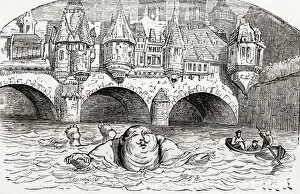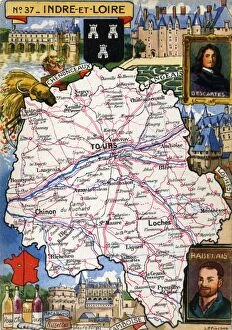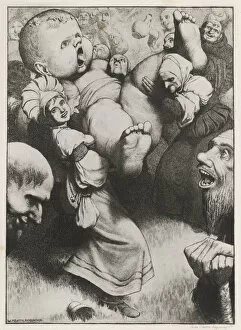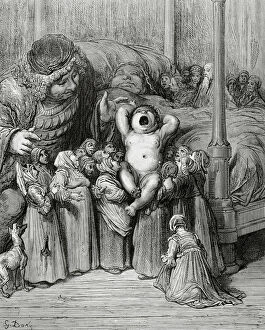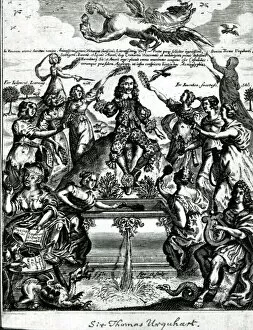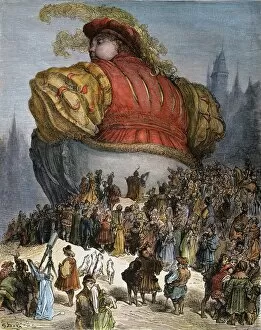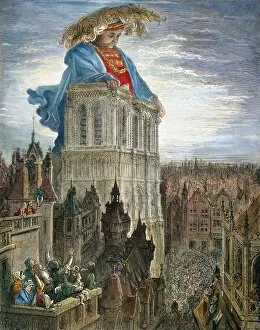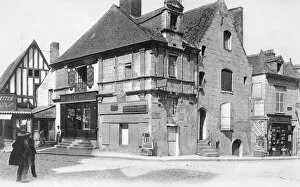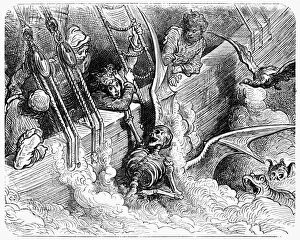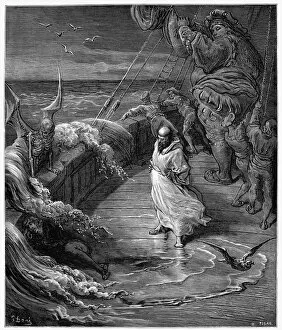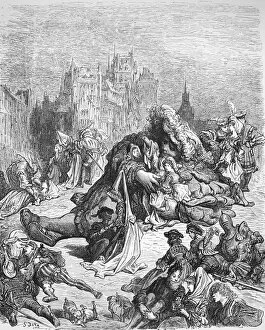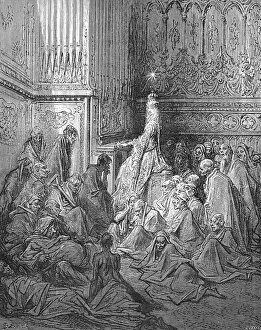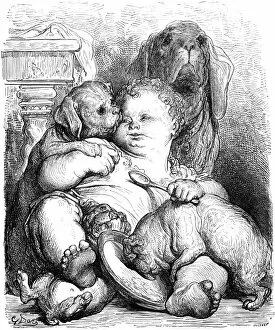Rabelais Collection (#7)
Rabelais, the renowned French writer and physician, is best known for his satirical masterpiece "Pantagruel
For sale as Licensed Images
Choose your image, Select your licence and Download the media
Rabelais, the renowned French writer and physician, is best known for his satirical masterpiece "Pantagruel. " This captivating illustration by Gustave Dore from Rabelais' "Gargantua and Pantagruel" transports us into a world of imagination and wit. Sir Thomas Urquhart's translation brought this work to English-speaking audiences, allowing them to appreciate its brilliance. In his "Songes De Pantagruel, " Rabelais takes us on a whimsical journey through the mind of Pantagruel, a giant with an insatiable appetite for knowledge and adventure. Lillah McCarthy's interpretation of Rabelais' works in her illustrations captures their essence beautifully. The engraving depicting scenes from Rabelais' complete works showcases Gustave Dore's exceptional talent as an illustrator. From the giant Pantagruel visiting Archduke Grippeminaud to exploring the monastery on Esclots Island, these images bring Rabelais' vivid storytelling to life. As we delve deeper into Rabelais' world, we encounter historical references such as the map of Indre-et-Loire Department and events like the Prise de la Roche Clermaud (Taking the Rock Clermond) or Assaut de la Roche Clermaud (Assault of the Roche-Clermaud). These elements add depth and context to his narratives. One cannot forget Le Sophiste feut introduict et commenca sa harangue en toussant (The Sophist was introduced and began his speech by coughing), which exemplifies Rabelaisian humor at its finest. His ability to blend satire with social commentary makes him one of literature's most influential figures. Through his writings, Rabelais challenges societal norms while entertaining readers with tales that are both fantastical and thought-provoking.

